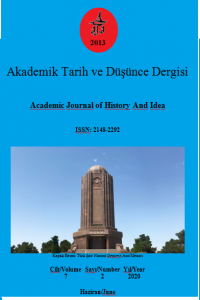Kutup Şahi Hanedanlığı’nın Başkenti Golkonda’da Fars Dili Ve Edebiyatı
Hamedanlı
Türkmen bir aileden olan, 1496’da Kutbu’l-Mülk unvanını alan Sultan Kuli,
Hindistan’ın Güneyindeki Dekken bölgesinde önce Behmenîlerin hizmetinde
bulunmuştur., Telangana Eyaleti Valisi olduktan sonra da 1512’de bağımsızlığını
ilan ederek, Golkonda hanedanlığını kurmuştur. Bölgenin yönetimi Muhammed
Kuli’den sonra Muhammed Kutub Şahi ile devam etmiştir.Babürlü Hanedanlığı 1526-1837’de
Hindistan’ın kuzey kesiminde varlığını ortaya koyarken, Kutub Şahi Sultanlığı 1512-1687’de Hindistan’ın Güney bölgelerini
yönetmiştir. Bölgede Hintçe ve çok sayıda mahalli dilin yanı sıra Farsça da
konuşulmuştur. Kuzey Hindistan’da kurulan devletler, Farsçaya ayrı bir ilgi
duymuş hatta Farsçayı resmi devlet dili olarak kabul etmişlerdir. Fars asıllı
devlet olan Behmenîlerin yıkılışıyla da Güney Hindistan, Kutub Şahiler
döneminde bölgede hali hazırda konuşulmakta olan Farsçayı öğrenerek
geliştirmişlerdir. Genel olarak Hindistan’da kullanılan dillere ve Farsçanın
bölgede kullanımına bakıldığında özellikle Türklerin yönetimde olduğu
dönemlerde Farsçanın gelişimi için gerekli desteğin saray tarafından verildiği
görülmektedir. Süreç içerisinde
yönetimler, saraylarına İran’dan şair, yazar mutasavvıf ve çok sayıda bilim
adamını davet etmiş, yapılan çalışmalar neticesinde Farsça, Hindistan genelinde
hızla tanınıp yayılmıştır. Kutub Şahi Sultanlığının başkenti olan Golkonda ise
bir kültür merkezi kimliğine bürünerek edebî çalışmalara ev sahipliği
yapmıştır. Çalışmamızda Kutub Şahiler dönemindeki Fars dilinde kaleme alınmış
eserlerin tanıtımı ve Farsçanın kullanımı anlatılmaya çalışılırken, Dekken
eyaleti için önem arz eden Golkonda şehri hakkında az da olsa bilgilendirme
yapılacaktır.
Persian Language and Literature In Golconda, The Capital City Of Qutb Shahi Dynasty
Sultan Quli was from a Turkmen family of Hamedan
and received the title of Qutb-ul-Mulk in 1496. He was first served to the Bahmanis
in the Deccan region in the south of India, became the Governor of Telangana
State and declared independence in 1512 and established the Golkonda dynasty. After
Muhammad Quli, the region was ruled by Muhammad Qutb Shahi.Baburlu Dynasty was
ruled in the northern part of India in 1526-1837, while Qutb Shahi Sultanate
ruled the southern regions of India in 1512-1687. Beside Hindi and other several
local languages, Persian was also spoken in the region. The states established
in the north India had a special interest in Persian and even accepted it as
their official language. After the dismemberment of the Bahmani Sultanate,
Persian language was already widespread in the region and developed further in
the southern India during the period of Qutb Shahi.When we look at the
languages used in India and the situation of Persian in the region in general,
it is seen that the palace provided necessary support for the development of
the Persian, especially during the periods when the Turks were in control.
Throughout this period, the rulers invited Iranian poets, writers and religious
scholars and many scientists to their palaces, and as a result of their work,
Persian was quickly recognized and spread throughout India.Golconda, the
capital of the Qutb Shahi Sultanate, became a cultural centre and hosted
literary events. In our study, we will examine
and try to explain the works written in Persian language and use of Persian
language during the period of Qutb Shahi Sultanate, but at the same time, we will
provide some information about the city of Golconda, which was important for the state of Deccan.
___
- CHANDRA Satish (2006). Medieval India: From Sultanat to the Mughals Part – II, Har-Anand Publication, India.
EATON, R., M., (2005). Social Life History Of Dekken The New
Cambrıdge Hıstory Of Indıa I • 8 A Social History Of The Deccan, 1300–1761 Eight Indian Lives Cambridge University Press.
Https://İslamansiklopedisi.Org.Tr/Kutubsahiler Hindistan’da Batı
Dekken Bölgesinde Hüküm Süren Bir Türk Hânedanı (1512-1687). Erişim Tarihi: 18.08.2018.
- SHERWANİ, H.K., (1973). Joshi, P.M History of Medieval Deccan(1295-1721), Volume I Published Under Authority of The Goverment of Andhra Pradesh.
SHERWANİ, H.K, (1974). Joshi, P.M History of Medieval Deccan(1295-1721) Volume II Published Under Authority of The Goverment of Andhra Pradesh.
YAZDANİ, G., (1921). Epigraphia Indo-Moslemica, Superintendent Goverment Printing, Calcutta.
http://hauntedindia.blogspot.com.tr/2014/06/golconda-fort-hyderabad.html Erişim Tarih: 15.08.2018.
